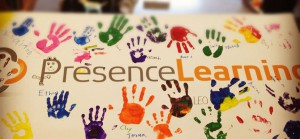Helping Special-Needs Kids With High-Tech Therapy
— November 4, 2014
Presence Learning: A Pioneer in Telemedicine and Online Education
Presence Learning, a San Francisco-based company, is a leader in two growing industries: telemedicine and online learning. Ranked #146 on the 2014 Inc. 5000 list, the company delivers innovative therapy solutions to children with speech and other developmental disorders. Co-founders Clay Whitehead and Jack Lynch have built a $5.9 million business driven by a mission to provide life-changing services to people with disabilities worldwide. Backed by investors such as New Markets Venture Partners and Catamount Ventures, the company’s ambitions extend far beyond American schoolchildren. Its goal is to support individuals with disabilities across the globe.
A Personal Connection to the Mission
Clay Whitehead’s passion for this work is deeply personal. As a child with dyslexia, he struggled with reading and writing, which necessitated special education interventions. His classroom had an early computer—a large beige box running from floppy disks—which transformed his ability to complete assignments by allowing him to type instead of write by hand. This early exposure to technology as a learning aid laid the groundwork for his belief in its potential to assist children with disabilities.
Jack Lynch, Whitehead’s business partner, also brings a personal understanding of the challenges faced by children with disabilities. His cousin, who is on the autism spectrum and non-verbal, inspired him to explore how technology could address these needs. Together, the co-founders envisioned a future where technology could break down barriers and create opportunities for special-needs children.
Starting Small: Early Efforts to Build the Business
The journey to build Presence Learning began with perseverance. In the initial stages, Whitehead reached out to all 52 special education agencies in California. Only one agency responded, referring him to two schools. While one school declined the offer, the other decided to collaborate. This partnership provided the foundation for developing Presence Learning’s products and services. By the end of the first year, the company had secured two additional contracts, marking a turning point in its growth.
Delivering Innovative Therapy to Students Nationwide
Presence Learning employs licensed therapists and clinicians to provide services like speech therapy, occupational therapy, and counseling to students from pre-kindergarten through 12th grade. These services are delivered through an interactive web platform that allows therapists to work with students in real-time. Each therapy session is designed to be engaging and effective, often incorporating games, drills, or workbooks tailored to individual goals. The company works closely with families and schools to ensure that therapy methods align with evidence-based practices.
Currently, the company operates in 34 states and conducts approximately 270,000 therapy sessions annually. For children living in rural or underserved areas, Presence Learning’s online model is particularly beneficial. These communities often lack specialists who can address specific developmental needs, making remote therapy a critical resource.
Technology as a Bridge to Progress
The use of technology in therapy has proven to be a game-changer, especially for children who face unique challenges. Many children are drawn to the digital format, finding it more engaging and comfortable than traditional in-person sessions. For children on the autism spectrum, technology provides a sensory-safe environment where they can focus on communication and social skills without the anxiety of physical touch.
This innovative approach also opens doors for children facing severe obstacles. In one case, a child with a significant speech impediment experienced bullying so severe that he began having suicidal thoughts. By increasing the intensity of his therapy, Presence Learning helped him reduce his speech impediment, which ultimately led to an end to the bullying. This intervention not only improved his communication skills but also transformed his emotional well-being, demonstrating the profound impact of effective therapy.
The Larger Picture: Disabilities and Society
Disabilities are often viewed as affecting a small portion of the population, but the reality is far different. When considering conditions such as autism, Down syndrome, stutters, cerebral palsy, and learning disabilities, the percentage of individuals who could benefit from specialized services is substantial. In the U.S. alone, 13% of school-aged children are formally enrolled in special education programs. The actual need may be even higher, as many children with milder challenges remain undiagnosed or underserved.
Presence Learning’s founders believe that the company’s mission should extend beyond schools to include adults and the elderly. Disabilities do not disappear after high school graduation, and the challenges faced by people with disabilities are universal. The company envisions a future where its services are accessible to individuals of all ages, across borders and cultures.
Expanding Horizons: A Global Vision
Presence Learning is not content to remain a niche service provider. Its vision encompasses a global network that addresses the diverse needs of people with disabilities. By leveraging advancements in technology, the company aims to bridge gaps in care and reach communities that have historically been underserved. This includes exploring opportunities in regions like Southeast Asia, where companies such as Vietnam’s S3Corp are already making strides in web and mobile solutions. Partnerships with international tech firms could play a pivotal role in scaling Presence Learning’s operations to new markets.
The potential for international growth is vast. Disabilities affect families worldwide, and access to specialized services remains a significant challenge in many countries. By expanding its platform and adapting its model to meet the needs of different populations, Presence Learning could create a meaningful impact on a global scale.
The Transformative Power of Technology
At its core, Presence Learning is about unlocking potential. The company’s innovative use of technology empowers children to overcome obstacles, communicate effectively, and build confidence. Each therapy session represents a step toward a brighter future for the child, their family, and their community. As the company continues to grow, its commitment to serving people with disabilities remains unwavering, fueled by the belief that everyone deserves the opportunity to thrive.
By integrating cutting-edge technology with compassionate care, Presence Learning is setting a new standard in special education and therapy. Its work is a testament to the power of determination, innovation, and a shared vision for a more inclusive world.






